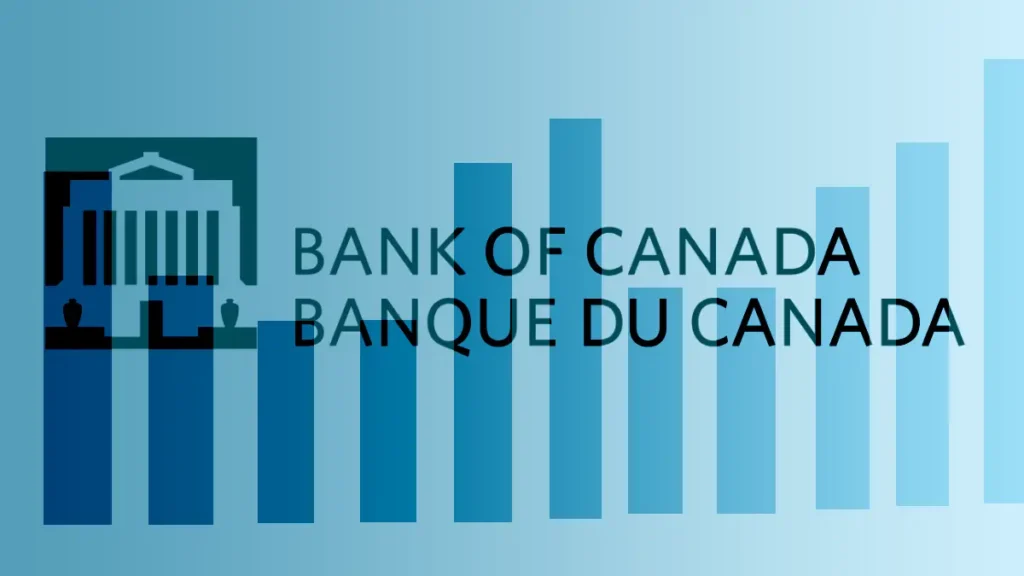David Watt, HSBC Canada’s chief economist, expressed the belief that the bank might not take action until the second half of next year.
His reasoning is rooted in skepticism about the inflation numbers, as he shared during a Thursday television interview with BNN Bloomberg.
Watt conveyed that the Bank of Canada will likely adopt a cautious stance on rate cuts. Although, being in the face of indications for an economic slowdown in Canada.
He pointed out that this cautious approach stems from the anticipated delay in inflation reaching the bank’s target rate of two percent.
Concurring with this outlook, Douglas Porter, the chief economist at BMO Capital Markets, aligns with the notion that rate cuts are unlikely to commence until the second half of 2024.
This stands in contrast to the market’s anticipation, where there has been a trend of advancing expectations regarding the timing of rate decreases in both the US and Canada.
Anticipating the future, the speaker expressed optimism about potential rate cuts in the coming year.
However, the belief persists that if mistakes are to be made, the Bank of Canada and the US Federal Reserve might lean towards maintaining interest rates at elevated levels for an extended duration.
In the same panel discussion, Stefane Marion, the chief economist at the National Bank of Canada, stated his expectation that the Bank of Canada will implement rate cuts totaling around 100 basis points by the end of the next year.
Marion acknowledged a desire to predict further rate decreases; however, he pointed out that persistent inflation figures related to housing costs are likely to act as a factor in maintaining interest rates at higher levels for an extended period.
Highlighting a crucial factor, Marion emphasized the resilience of the housing component in the Consumer Price Index (CPI), currently growing at six percent.
It constitutes 30 percent of the CPI, posing a limitation for implementation of Bank of Canada rate cuts.
Royce Mendes, head of macro strategy at Desjardins Group, summarised the situation, stating, “The bottom line is that the economy is still sputtering along.”
Desjardins Group’s perspective aligns with the anticipation of the Bank of Canada initiating a rate-cutting cycle in the second quarter of 2024.
Tu Nguyen anticipates the Bank of Canada to cut rates soon
Economist Tu Nguyen from RSM Canada suggested a shift in focus, advocating that it’s time to transition the discussion from potential rate hikes to rate cuts. The economy’s abrupt and “unexpected” contraction has prompted this shift.
In an emailed note on Thursday, she suggested that the Bank of Canada could announce the first rate cut in April 2024, aiming to prevent a more extensive recession than necessary.
Economic slowdown in Canada
Thursday’s release of Statistics Canada’s gross domestic product report revealed a 1.1 percent annualized economic slowdown in Canada in the third quarter.
This decline was attributed to reduced international exports and a deceleration in businesses’ inventory accumulation.
Despite the third-quarter contraction, there was a notable adjustment in the economic outlook.
Statistics Canada revised its initial report on the second quarter, indicating that the economy experienced net growth of 1.4 percent. Furthermore, the agency’s preliminary estimate for October suggested a positive uptick in economic activity.
Following the data release, the Canadian dollar experienced a 0.2% decline, trading at 1.3620 to the US dollar, equivalent to 73.42 US cents.
The Bank of Canada has maintained its position since July, raising its benchmark interest rate to a 22-year high of 5% to address inflation concerns.
Money markets are anticipating a potential rate cut as early as March, with expectations for a status quo at the next announcement on Wednesday.
Is economic slowdown the result of constant rate hikes?
Douglas Porter emphasized that despite the conflicting readings and revisions, the core message remains consistent. Over the past six months, they have seen an economic slowdown in Canada.
Stefane Marion argued that the aggressive rate hikes by the Bank of Canada have played a role in stalling the economy.
He noted that Canadians have only experienced about 60 percent of the effects of the bank’s monetary policy at this point.
Highlighting the lingering effects, Marion pointed out that there is still 40 percent of the impact from previous rate hikes that will influence the economy in the months ahead.
He emphasized the collateral damage associated with a substantial 500 basis points hike, noting the evident struggles of the Canadian consumer.
David Watt emphasized that the third-quarter GDP contraction reinforces the narrative of a slowing Canadian economy. He noted that the discussion about Canada potentially already being in a genuine recession is gaining momentum and is likely to gain further traction in light of the recent economic data.
Read More: Federal Reserve Beige Book Warns of Slowing Economic Growth
Fed Officials Change Stance But Remain Wary of Rate Cut Bets

